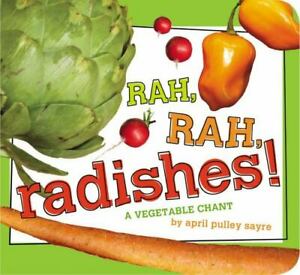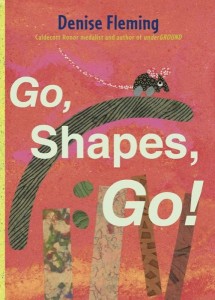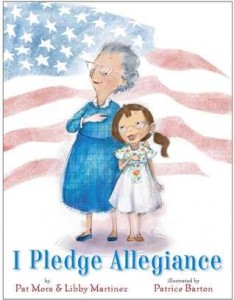April: Poetry, Earth Day, and April Pulley Sayre
April Pulley Sayre, a gift to the children’s literature community, passed away recently. In honor of her and her incredible legacy of picture books, I’m sharing a previous post. Look at all the ways you can use her books to teach in the most engaging ways!

I had the pleasure of speaking at an early education conference where our theme was literacy and science. I brought stacks of books that tie into STEM (Science, Technology, Engineering, Mathematics) or STEAM (add Art) to share. Rather than just lecture all day, I led a session of “speed-dating” books: we’d spend a few minutes skimming a book and brainstorming ways to use it with students, share our ideas with the group, and pass the book along. This way, we had time to get our hands on over a dozen books and walk away with practical classroom applications. I was so inspired by the fantastic ideas the teachers generated! Here are a few ideas we came up with after reading Rah,Rah, Radishes! A Vegetable Chant by April Pulley Sayre:
Bring in vegetables found in the book. Sort the vegetables by color and by size.
Classify and sort vegetables by the parts we eat: root vegetables, leaves, etc. Read Tops and Bottoms by Janet Stevens as a tie-in text and talk about which vegetables would be “tops” or “bottoms” according to Hare.
Predict which vegetables will sink or float. Test predictions in a tub of water. Wash the vegetables and talk about textures.
Use the vegetables to make prints.
Compare and contrast with fruits.
Weigh and measure the vegetables. Use a vegetable as a measuring tool.
Take photos of vegetables and label them. Reread the book and have students hold up the corresponding photos.
Make a chart or a Venn diagram with the terms “raw” and “cooked”. Try some vegetables both ways and chart our preferences.
See what other vegetables besides potatoes can be delicious mashed (great for little ones to do the mashing!)
Bring in potatoes with “eyes” sprouting and bring in vegetable seeds. Compare seeds and sprouts, then plant!
Make an edible collage with vegetables.
Practice patterning skills like ABAB, etc. with bite-size veggies and eat when done.
Plan a field trip to a farmer’s market or invite a farmer to come to the classroom for more vegetable experiences.
If you’re interested in the list of science books I shared, please email me at kristenremenar AT gmail DOT com. If you like Rah, Rah, Radishes! A Vegetable Chant, be sure to check out Go, Go, Grapes! A Fruit Chant and Let’s Go Nuts! Seeds We Eat also by April Pulley Sayre. Hooray for early science!
Read MoreSeptember Bonus List of Books and Activities!
Because I gave a presentation to awesome librarians this month and I couldn’t resist sharing all the great ideas we came up with, you get a bonus post this month! And because you’re getting a bonus post, I hope you’ll allow me to indulge in a bit of horn-tooting.
My debut picture book, GROUNDHOG’S DILEMMA, illustrated by Matt Faulkner (swoon!) will be published by Charlesbridge this December 1st, and it recently received a good professional review:
“Faulkner’s anthropomorphic animals and vibrant colors recall Uncle Wiggly, and the illustrations are packed with humorous details that repay rereadings. Remenar’s graceful prose and the subtlety of her message, pitched to older preschoolers and early-elementary students, are a good match. A sly and funny take on truth-telling and friendship.” – Kirkus, Oct. 2015
Woohoo!!!!!!!
Ok, horn-tooting over.
I spent a morning with a roomful of youth librarians and bunches of new books. We came up with these activities revolving around the key early literacy skills: Talk, Sing, Read, Write, Play. (Look here for lots more good stuff from Every Child Ready to Read.) Many of our activities can be used with a variety of books. I’m including our list of ideas and the books we shared. Enjoy!
TALK:
* Read Rufus Goes to School by Kim T. Griswell and talk about what you need for school, what you shouldn’t do in school, and favorite books you know how to read.
* Read Groundhog’s Dilemma by Kristen Remenar and talk about your favorite/least favorite parts of winter and spring. Talk about animals that hibernate and those that don’t. Talk about why the characters in the story wanted or didn’t want Groundhog to see his shadow.
* Read Clothesline Clues to Sports People Play by Andy Robert Davies and encourage kids to guess the sport. Discuss unfamiliar terms like foil and quiver.
* Use nonfiction books with photos of bees to go along with Bee Dance by Rick Chrustowski. Bring in a honeycomb and give kids bendy straws so they can act like the bees in the book.
* Read Pepper and Poe by Frann Preston-Gannon and discuss why Pepper feels the way he does.
* Discuss good and bad manners after reading The Entertainer by Emma Dodd.
* Encourage kids to respond to “which would you choose?” while reading Hot Rod Hamster by Cynthia Lord.
SING:
* Sing rhyming words, even nonsense ones, after reading Hi! by Ethan Long.
* Sing “Milkshake” after reading Lulu’s Party by Kit Chase.
* Sing the book Old Mikamba Had a Farm by Rachel Isadora.
* Sing “The Days of the Week” song after reading Pepper and Poe by Frann Preston-Gannon, or “If You’re Happy and You Know It”.
* Sing “Take Me Out to the Ball Game” after reading Groundhog’s Dilemma by Kristen Remenar.
READ:
* Read nonfiction books about groundhogs and Groundhog’s Day along with Groundhog’s Dilemma by Kristen Remenar. (It delights me every time I type it!) Use puppets to help narrate/read the story.
* Use magnetic or felt letters to rearrange and read aloud, after reading Little Bird’s Bad Word by Jacob Grant.
WRITE:
* Kids can decorate the first letter of their name or make pictures with die-cut letters after reading Alphabeasties by Sharon Werner and Sarah Forss.
* Write your own “wumbers” inspired by Wumbers by Amy Krouse Rosenthal and Tom Lichtenheld.
* Draw or write about something you cherish after reading Thankful by Eileen Spinelli.
* Trace your shoes and decorate the tracings after reading Whose Shoe? by Eve Bunting.
* Write a letter or draw a picture to convince Groundhog to predict winter or spring after reading Groundhog’s Dilemma by Kristen Remenar. Kids can write and draw about a time when they’ve had to resolve a dilemma. Outside with chalk, or inside on paper, kids can trace their own shadows!
* Create maps of your playground, classroom, school, library, etc. after reading Henry’s Map by David Elliot.
* Paint Q-tip paintings of trees inspired by Fall is Not Easy by Marty Kelley.
* Write your own “word equations” inspired by This Plus That by Amy Krouse Rosenthal.
PLAY:
* Use a string and pin it to a world map to show all the places from Because Amelia Smiled by David Ezra Stein. Compare it to Madlenka and Nothing Ever Happens on My Block.
* Act out Uh Oh! by Shutta Crum.
* Play a version of “Going On a Bear Hunt” after reading In the Canyon by Liz Garton Scanlon.
* Incorporate different dances like The Hokey Pokey and The Twist and act out The Sky Is Falling by Mark Teague. Have a dance party!
* Create hand/body motions and make the sound effects for Niňo Wrestles the World by Yuyi Morales. Come up with other characters who might want to wrestle!
* Move like cats and act out the emotions from Pepper and Poe by Frann Preston-Gannon.
* Have a storytime party where kids act out what should and should not happen at a party after reading The Entertainer by Emma Dodd.
* Paint small boxes like houses after reading Vincent Paints His House by Tedd Arnold.
* Rearrange letter tiles to show how one word can become another after reading One Boy by Laura Vaccaro Seeger.
* Act out Groundhog’s Dilemma by Kristen Remenar. (Still fun to type!) Little ones can curl up in a box and pop out for Groundhog’s Day to look for their shadows, or try making shadow animals on a wall.
Go, Shapes, Go!
 One of my favorite ways to hook readers during March is Reading Month is to do an author study, and one of my all-time favorite author/illustrators for the elementary crowd is Denise Fleming.
One of my favorite ways to hook readers during March is Reading Month is to do an author study, and one of my all-time favorite author/illustrators for the elementary crowd is Denise Fleming.
I’ve had a book crush on Fleming since 1991 when I first read In the Tall, Tall Grass. The richness of the colors, the text that is so precise and still so simple – it draws in young readers who ask for it over and over. Fleming’s latest book, Go, Shapes, Go! again takes simple but descriptive words and art, and asks kids to play along. It’s brilliant.
A mouse tells recognizable shapes (square, rectangle, triangle, oval, arc) to move to combine into a character. Verbs like bounce, slither, and twirl along with the shapes that are labeled on each page make for the perfect opportunity to build vocabulary while supporting early readers. (Go, Craft & Structure, Go!) The plot of how the shapes combine and recombine to the delight (or dismay) of the mouse makes this book more than just a “name the shape” book.
Denise Fleming’s website is packed with fun stuff for kids to go along with her books. You can print off the shapes she used in Go, Shapes, Go! for kids to move and make their own characters, and there’s a Shapes Match-Up page so kids can match the labeled shape with the word describing how it moved in the book
The process of pulp painting that Fleming uses to make her picture book art is fascinating. Click through denisefleming.com or go to YouTube to see videos of how Fleming colors the cotton rag fiber, makes the stencils, and pours the slurry through a screen. She even has in-depth directions to make paper yourself, and a much easier version using toilet paper – a guaranteed hit for kids!
This March, share Go, Shapes, Go! and compare it with Fleming’s 20+ other wonderful picture books for preschoolers and early elementary students. After you’ve all fallen in love with her work, email Denise through her website. She is an exceptional person as well as an amazing author/illustrator, and your kids will have a whole new appreciation for books after getting to know her.
Read MoreI Pledge Allegiance
 Happy August! Although summer is in full swing in Michigan, one of my local elementary schools is already back in session. Whether your school bell has tolled or you have one more glorious month to enjoy, you’ll want to have this beautiful book in your classroom: I Pledge Allegiance by Pat Mora & Libby Martinez and illustrated by Patrice Barton.
Happy August! Although summer is in full swing in Michigan, one of my local elementary schools is already back in session. Whether your school bell has tolled or you have one more glorious month to enjoy, you’ll want to have this beautiful book in your classroom: I Pledge Allegiance by Pat Mora & Libby Martinez and illustrated by Patrice Barton.
Libby’s great-aunt Lobo is becoming a citizen of the United States. Her story gives a meaningful framework for the information shared about the Pledge of Allegiance. We learn a bit of history about the Pledge and what it means when we say things like “allegiance” and “indivisible”. The entire Pledge is in the text several times, so kids will be able to recite along. The soft art that celebrates our country’s diversity and the sprinkling of Spanish words (Libby’s great-aunt is from Mexico) are wonderful inclusions.
Not only is this book a fantastic story about the immigration experience, it’s the perfect springboard for a lesson on what we are really saying when we recite the Pledge of Allegiance. For example, Lobo tells Libby, “‘I like the words “liberty and justice for all… we are promising to be fair to everyone.'” Write the Pledge of Allegiance on a chart and put it next to a large open space on a whiteboard. Using I Pledge Allegiance as a guide, students can help translate the lines of the Pledge into terms that make sense to them. It’s a great vocabulary lesson (so you can check off Craft & Structure on your Common Core to-do list) and it will make the Pledge of Allegiance much more meaningful and personal for your students. This is patriotism at its best.
Read More







